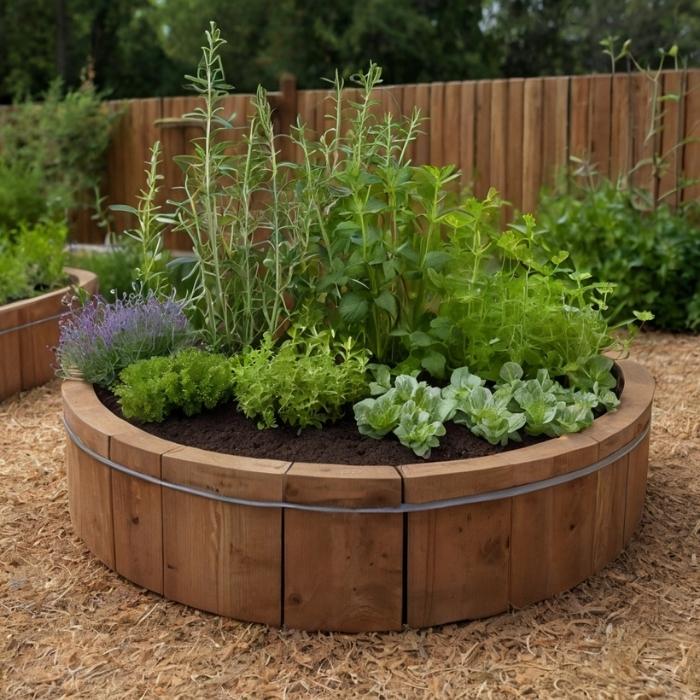Herb Garden Ideas: Transform Your Space with Fresh Flavors
Are you dreaming of adding a touch of greenery and fresh flavors to your home? Herb gardens are the perfect way to combine beauty and practicality, whether you have a sprawling backyard, a small balcony, or even a windowsill. With an herb garden, you can enjoy the convenience of freshly picked herbs for your recipes while creating a lush, aromatic oasis. From classic basil and rosemary to unique options like lemon thyme or chocolate mint, the possibilities are endless.
In this article, we’ll explore creative herb garden ideas to suit any space, whether you prefer vertical gardens, raised beds, or indoor pots. Discover how to grow and care for your herbs while maximizing space and enhancing your home’s aesthetics. Let’s dive into the world of herb gardening and unlock the potential of your green thumb
Herb Garden Ideas for Every Space
Creating an herb garden is a rewarding endeavor that not only enhances your culinary experiences but also beautifies your outdoor space. Whether you have a sprawling backyard or a small balcony, there are numerous creative ways to incorporate herbs into your gardening plans. Here are some unique ideas to inspire your herb garden design.
1. Checkerboard Design
For a modern aesthetic, consider a checkerboard layout. This design involves alternating color squares filled with low-growing herbs, providing a striking visual appeal. You can achieve this by using square pavers or planting beds, alternating between different herb varieties or sticking to one type for uniformity. This layout not only maximizes space but also adds a contemporary touch to your garden1.
2. Spiral Herb Garden
The spiral herb garden is a popular choice for those looking to save space while adding vertical interest. Construct a spiral shape using stones or bricks, gradually increasing the height as you move inward. Place taller herbs like basil at the top and let trailing herbs such as thyme cascade down the sides. This design typically requires a diameter of about 6.5 feet and can reach heights of 3.5 feet, making it both functional and visually appealing1.
3. Hillside Terraces
If you have a sloped yard, consider creating hillside terraces for your herbs. This method allows for excellent drainage and can be visually stunning. Build retaining walls to create flat areas where you can plant herbs, placing taller varieties at the back and shorter ones at the front. This design not only utilizes the natural landscape but also provides easy access for harvesting1.
4. Knot Gardens
For a more formal look, try a knot garden. This intricate design features intertwining paths of various herbs and requires regular maintenance to keep its shape. Knot gardens are best suited for smaller spaces and can serve as beautiful focal points in urban environments1.
5. Small Culinary Herb Gardens
If you’re limited on space, small culinary herb gardens can be both practical and attractive. Start with a feature plant like upright rosemary in the center, surrounded by tall flowering plants such as chives. Fill in the borders with creeping thyme or oregano, allowing the herbs to grow naturally before adding more plants to avoid overcrowding2.
6. Vertical Gardens
For those with limited horizontal space, consider installing a vertical garden on a wall or balcony railing. Use wall-mounted planters or trellises to grow herbs like basil, cilantro, and parsley upwards, maximizing your growing area without taking up valuable ground space3.
7. Container Gardens
Planting herbs in containers is an excellent option for patios or balconies. Choose decorative pots that complement your outdoor decor while ensuring they have adequate drainage holes. Group pots together for a lush look and easy access when cooking5.
8. Raised Garden Beds
Building raised garden beds is another effective way to grow herbs while keeping them organized and accessible. These beds can be constructed from wood, stone, or even recycled materials and can be tailored to any size that fits your space. They also provide better soil drainage and can be filled with nutrient-rich soil for optimal growth8.
9. Herb Borders
Create an attractive border around your garden or patio using herbs like lavender, chives, and sage. This not only defines your space but also adds fragrance and beauty throughout the growing season8.
10. Rock Walls and Gardens
Utilize existing structures like rock walls by planting cascading herbs that will spill over the edges, such as creeping thyme or summer savory. This technique not only enhances the visual appeal of your garden but also benefits from the natural protection offered by the wall3.
Conclusion
No matter how much space you have available, there are countless ways to create an herb garden that suits your style and needs. From modern checkerboard designs to charming knot gardens, these ideas can transform any area into a fragrant sanctuary filled with fresh flavors ready for culinary use. Start planning your herb garden today and enjoy the many benefits of growing your own herbs right at home

